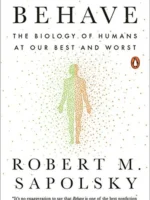Almost Like a Whale Review
Almost Like a Whale by Steve Jones is Darwin’s Origin retold with modern evidence. It keeps natural selection at the core while updating every chapter with genetics, development, ecology, and field results that Darwin could only guess at.
Overview
Jones maps classic themes—variation, inheritance, struggle, speciation, biogeography—to 20th and 21st century data: DNA polymorphisms, experimental evolution, island radiations, antibiotic resistance, and evo-devo.
Summary
Natural selection explains adaptation, while mutation, recombination, drift, and gene flow shape trajectories. Case studies from microbes to mammals demonstrate repeatable evolutionary logic. The title nods to macroevolutionary transitions made legible by fossils and genomes.
Authors
Steve Jones writes as a geneticist and communicator: witty, skeptical, and empirically grounded.
Key Themes
Evolution as mechanism plus history; genetics as Darwin’s missing piece; predictable patterns under constraint and chance.
Strengths and Weaknesses
Strengths: crisp modernization of Darwin’s arguments, strong examples. Weaknesses: lighter math and limited deep phylogenetic method detail.
Target Audience
Readers who want the Origin’s logic in contemporary language, teachers seeking case-rich explanations.
Favorite Ideas
Antibiotic resistance as laboratory evolution; island rules for body size; developmental switches steering big transitions.
Takeaways
Darwin’s framework stands, strengthened by genetics and experiment. Evolution is measurable, testable, and visible across scales.




